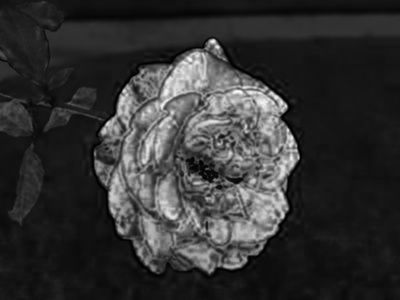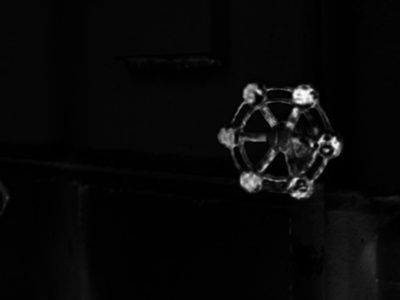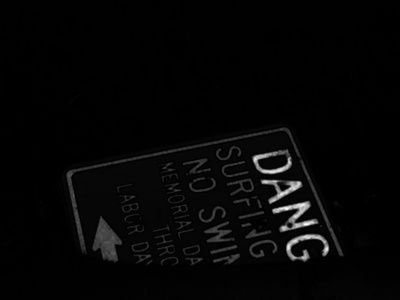国外的一个图像显著区域检测代码及其效果图 saliency region detection
先看几张效果图吧
效果图:
可以直接测试的代码:
头文件:
// Saliency.h: interface for the Saliency class. // ////////////////////////////////////////////////////////////////////// //=========================================================================== // Copyright (c) 2009 Radhakrishna Achanta [EPFL] //=========================================================================== #if !defined(_SALIENCY_H_INCLUDED_) #define _SALIENCY_H_INCLUDED_ #include <vector> #include <cfloat> using namespace std; class Saliency { public: Saliency(); virtual ~Saliency(); public: void GetSaliencyMap( const vector<unsigned int>& inputimg,//INPUT: ARGB buffer in row-major order const int& width, const int& height, vector<double>& salmap,//OUTPUT: Floating point buffer in row-major order const bool& normalizeflag = true);//false if normalization is not needed private: void RGB2LAB( const vector<unsigned int>& ubuff, vector<double>& lvec, vector<double>& avec, vector<double>& bvec); void GaussianSmooth( const vector<double>& inputImg, const int& width, const int& height, const vector<double>& kernel, vector<double>& smoothImg); //============================================================================== /// Normalize //============================================================================== void Normalize( const vector<double>& input, const int& width, const int& height, vector<double>& output, const int& normrange = 255) { double maxval(0); double minval(DBL_MAX); {int i(0); for( int y = 0; y < height; y++ ) { for( int x = 0; x < width; x++ ) { if( maxval < input[i] ) maxval = input[i]; if( minval > input[i] ) minval = input[i]; i++; } }} double range = maxval-minval; if( 0 == range ) range = 1; int i(0); output.clear(); output.resize(width*height); for( int y = 0; y < height; y++ ) { for( int x = 0; x < width; x++ ) { output[i] = ((normrange*(input[i]-minval))/range); i++; } } } }; #endif // !defined(_SALIENCY_H_INCLUDED_)
cpp:
// Saliency.cpp: implementation of the Saliency class. // ////////////////////////////////////////////////////////////////////// //=========================================================================== // Copyright (c) 2009 Radhakrishna Achanta [EPFL] //=========================================================================== #include "Saliency.h" #include <cmath> ////////////////////////////////////////////////////////////////////// // Construction/Destruction ////////////////////////////////////////////////////////////////////// Saliency::Saliency() { } Saliency::~Saliency() { } //=========================================================================== /// RGB2LAB //=========================================================================== void Saliency::RGB2LAB( const vector<unsigned int>& ubuff, vector<double>& lvec, vector<double>& avec, vector<double>& bvec) { int sz = int(ubuff.size()); lvec.resize(sz); avec.resize(sz); bvec.resize(sz); for( int j = 0; j < sz; j++ ) { int r = (ubuff[j] >> 16) & 0xFF; int g = (ubuff[j] >> 8) & 0xFF; int b = (ubuff[j] ) & 0xFF; double xval = 0.412453 * r + 0.357580 * g + 0.180423 * b; double yval = 0.212671 * r + 0.715160 * g + 0.072169 * b; double zVal = 0.019334 * r + 0.119193 * g + 0.950227 * b; xval /= (255.0 * 0.950456); yval /= 255.0; zVal /= (255.0 * 1.088754); double fX, fY, fZ; double lval, aval, bval; if (yval > 0.008856) { fY = pow(yval, 1.0 / 3.0); lval = 116.0 * fY - 16.0; } else { fY = 7.787 * yval + 16.0 / 116.0; lval = 903.3 * yval; } if (xval > 0.008856) fX = pow(xval, 1.0 / 3.0); else fX = 7.787 * xval + 16.0 / 116.0; if (zVal > 0.008856) fZ = pow(zVal, 1.0 / 3.0); else fZ = 7.787 * zVal + 16.0 / 116.0; aval = 500.0 * (fX - fY)+128.0; bval = 200.0 * (fY - fZ)+128.0; lvec[j] = lval; avec[j] = aval; bvec[j] = bval; } } //============================================================================== /// GaussianSmooth /// /// Blur an image with a separable binomial kernel passed in. //============================================================================== void Saliency::GaussianSmooth( const vector<double>& inputImg, const int& width, const int& height, const vector<double>& kernel, vector<double>& smoothImg) { int center = int(kernel.size())/2; int sz = width*height; smoothImg.clear(); smoothImg.resize(sz); vector<double> tempim(sz); int rows = height; int cols = width; //-------------------------------------------------------------------------- // Blur in the x direction. //--------------------------------------------------------------------------- {int index(0); for( int r = 0; r < rows; r++ ) { for( int c = 0; c < cols; c++ ) { double kernelsum(0); double sum(0); for( int cc = (-center); cc <= center; cc++ ) { if(((c+cc) >= 0) && ((c+cc) < cols)) { sum += inputImg[r*cols+(c+cc)] * kernel[center+cc]; kernelsum += kernel[center+cc]; } } tempim[index] = sum/kernelsum; index++; } }} //-------------------------------------------------------------------------- // Blur in the y direction. //--------------------------------------------------------------------------- {int index = 0; for( int r = 0; r < rows; r++ ) { for( int c = 0; c < cols; c++ ) { double kernelsum(0); double sum(0); for( int rr = (-center); rr <= center; rr++ ) { if(((r+rr) >= 0) && ((r+rr) < rows)) { sum += tempim[(r+rr)*cols+c] * kernel[center+rr]; kernelsum += kernel[center+rr]; } } smoothImg[index] = sum/kernelsum; index++; } }} } //=========================================================================== /// GetSaliencyMap /// /// Outputs a saliency map with a value assigned per pixel. The values are /// normalized in the interval [0,255] if normflag is set true (default value). //=========================================================================== void Saliency::GetSaliencyMap( const vector<unsigned int>& inputimg, const int& width, const int& height, vector<double>& salmap, const bool& normflag) { int sz = width*height; salmap.clear(); salmap.resize(sz); vector<double> lvec(0), avec(0), bvec(0); RGB2LAB(inputimg, lvec, avec, bvec); //-------------------------- // Obtain Lab average values //-------------------------- double avgl(0), avga(0), avgb(0); {for( int i = 0; i < sz; i++ ) { avgl += lvec[i]; avga += avec[i]; avgb += bvec[i]; }} avgl /= sz; avga /= sz; avgb /= sz; vector<double> slvec(0), savec(0), sbvec(0); //---------------------------------------------------- // The kernel can be [1 2 1] or [1 4 6 4 1] as needed. // The code below show usage of [1 2 1] kernel. //---------------------------------------------------- vector<double> kernel(0); kernel.push_back(1.0); kernel.push_back(2.0); kernel.push_back(1.0); GaussianSmooth(lvec, width, height, kernel, slvec); GaussianSmooth(avec, width, height, kernel, savec); GaussianSmooth(bvec, width, height, kernel, sbvec); {for( int i = 0; i < sz; i++ ) { salmap[i] = (slvec[i]-avgl)*(slvec[i]-avgl) + (savec[i]-avga)*(savec[i]-avga) + (sbvec[i]-avgb)*(sbvec[i]-avgb); }} if( true == normflag ) { vector<double> normalized(0); Normalize(salmap, width, height, normalized); swap(salmap, normalized); } }
关于代码的使用说明:
This file explains the usage of Saliency.h and Saliency.cpp files. The former contains the declaration of the Saliency class and its member functions and the later contains the respective definitions. Sample usage: #include "Saliency.h" void main() { // Assume we already have an unsigned integer buffer inputImg of // inputWidth and inputHeight (in row-major order). // Each unsigned integer has 32 bits and contains pixel data in ARGB // format. I.e. From left to right, the first 8 bits contain alpha // channel value and are not used in our case. The next 8 bits // contain R channel value; the next 8 bits contain G channel value; // the last 8 bits contain the B channel value. // // Now create a Saliency object and call the GetSaliencyMap function on it. Saliency sal; vector<double> salmap(0); sal.GetSaliencyMap(inputImg, inputWidth, inputHeight, salmap); // salmap is a floating point output (in row major order) }
我自己写的测试主程序:
可以指定一个文件夹,程序保存该文件夹下所有jpg文件的处理结果
#include "Saliency.h" #include <cv.h> #include <cxcore.h> #include <highgui.h> #include "windows.h" #include <iostream> #include <cassert> using namespace std; int main(int argc,char** argv) { WIN32_FIND_DATAA FileData; HANDLE hFind; hFind = FindFirstFileA((LPCSTR)"Imgs/*.jpg",&FileData); if (hFind == INVALID_HANDLE_VALUE) { printf ("Invalid File Handle. GetLastError reports %d/n", GetLastError ()); return (0); } Saliency sal; vector<double> salmap(0); while (FindNextFileA(hFind, &FileData)) { cout<<FileData.cFileName<<endl; string name("Imgs/"); name.append(FileData.cFileName); IplImage* img=cvLoadImage(name.c_str()); if (!img) { cout<<"failed to load image"<<endl; break; } assert(img->nChannels==3); vector<unsigned int >imgInput; vector<double> imgSal; //IplImage to vector for (int h=0;h<img->height;h++) { unsigned char*p=(unsigned char*)img->imageData+h*img->widthStep; for (int w=0;w<img->width;w++) { unsigned int t=0; t+=*p++; t<<=8; t+=*p++; t<<=8; t+=*p++; imgInput.push_back(t); } } sal.GetSaliencyMap(imgInput, img->width, img->height, imgSal); //vector to IplImage int index=0; IplImage* imgout=cvCreateImage(cvGetSize(img),IPL_DEPTH_64F ,1); for (int h=0;h<imgout->height;h++) { double*p=(double*)(imgout->imageData+h*imgout->widthStep); for (int w=0;w<imgout->width;w++) { *p++=imgSal[index++]; } } name.append(".saliency.jpg"); cvSaveImage(name.c_str(),imgout); cvReleaseImage(&img); cvReleaseImage(&imgout); } FindClose(&hFind); return 0; }
该代码的主页:http://ivrg.epfl.ch/supplementary_material/RK_ICIP2010/index.html
清华的最新研究:http://cg.cs.tsinghua.edu.cn/people/~cmm/saliency/





